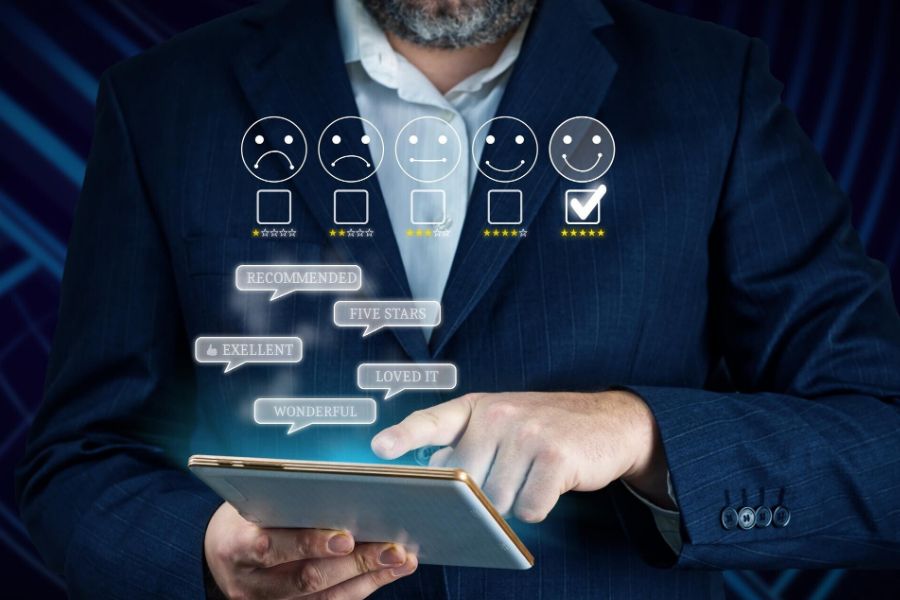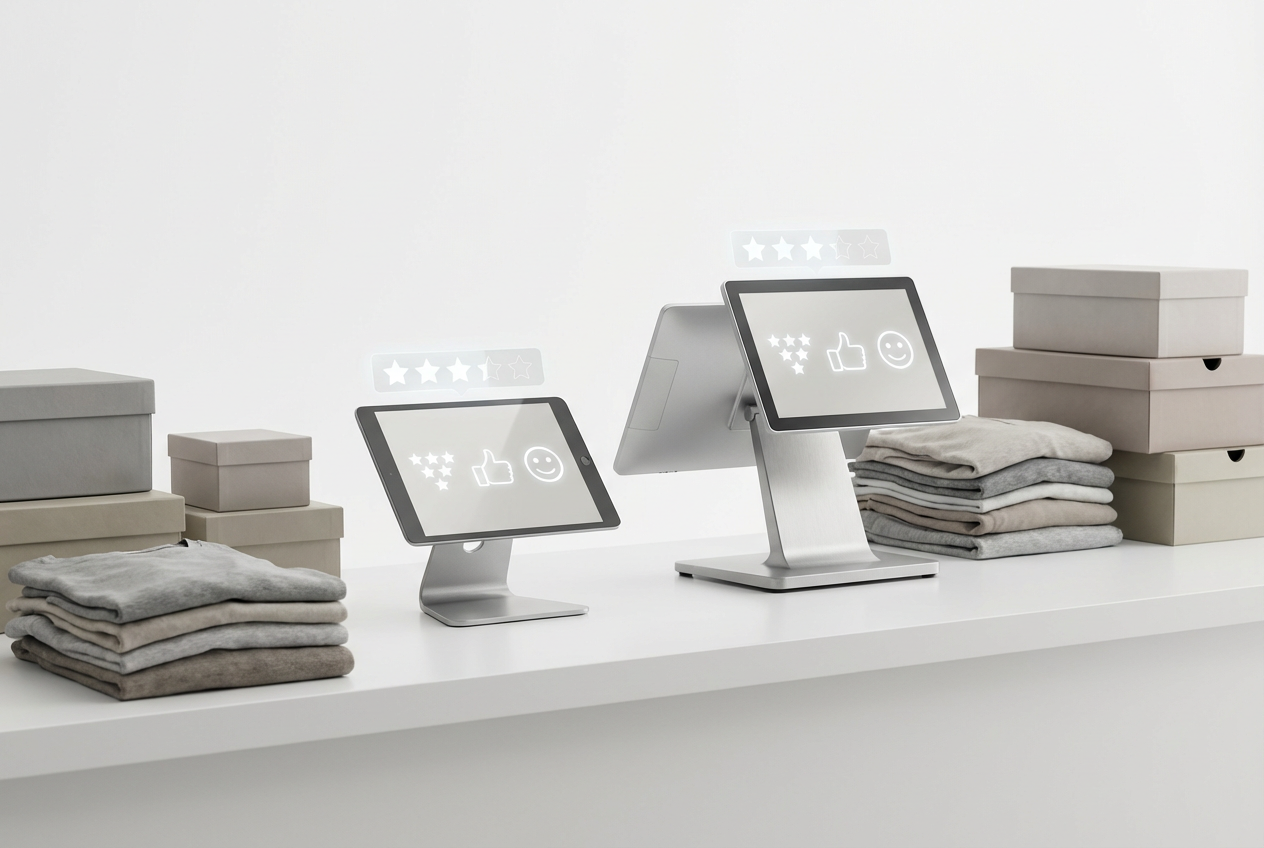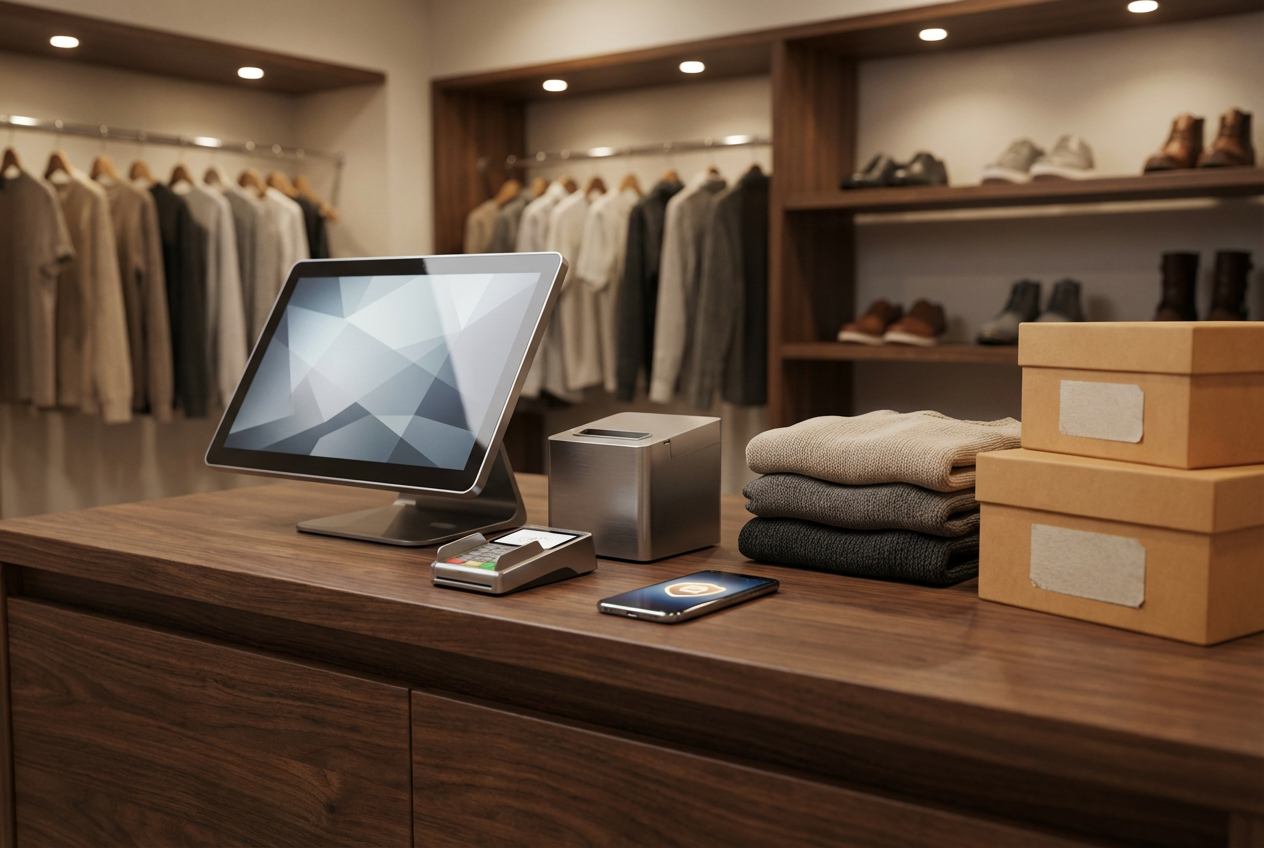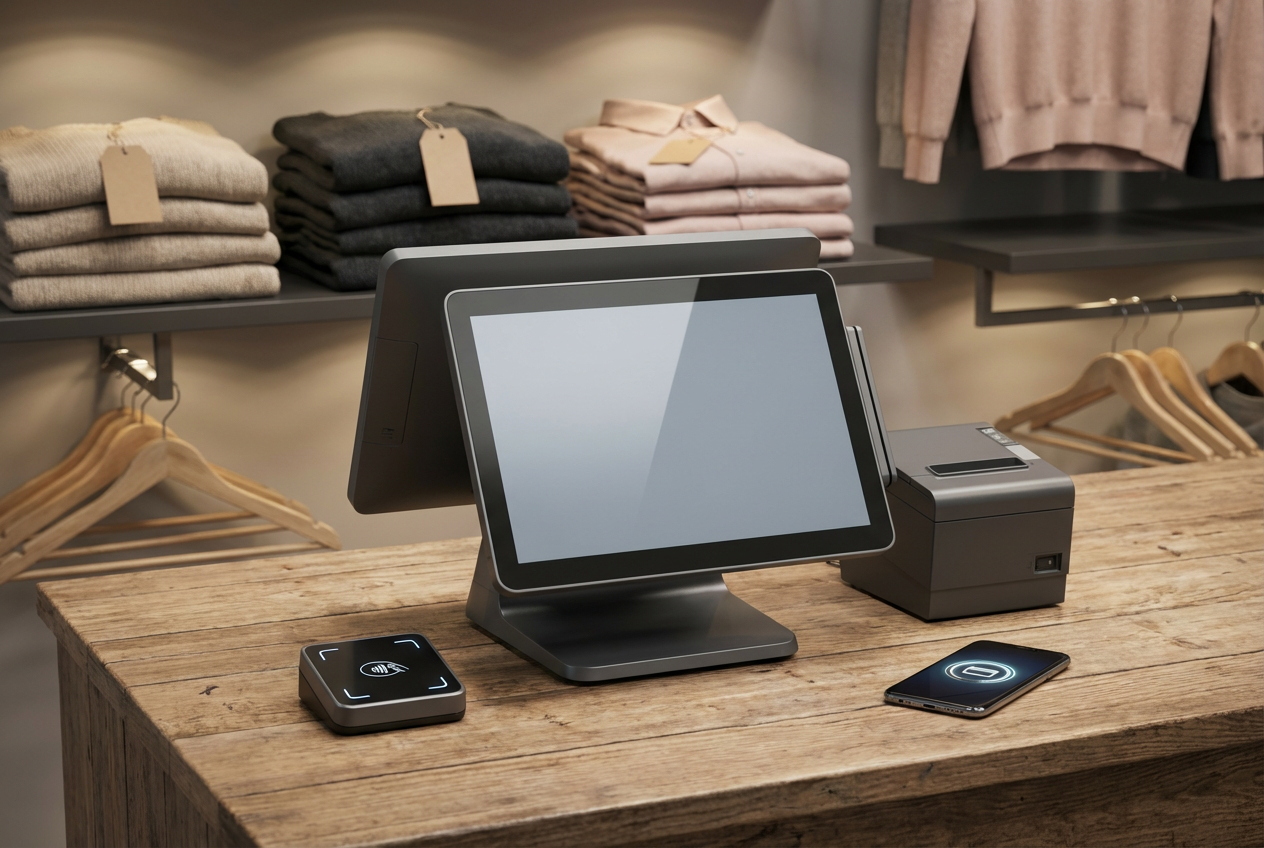Bain & Company reports that companies with strong customer experience in retail grow their revenues 4% to 8% faster than those that don’t. That’s a clear indicator of where the industry is heading. In 2025, where shoppers expect speed, personalization, and consistency, customer experience in retail is a key business driver.
With more shoppers moving between online and offline channels, the ability to create seamless and engaging experiences has a direct impact on loyalty, satisfaction, and long-term sales. This guide outlines practical strategies and fresh insights to help retailers reframe their approach and build meaningful connections at every touchpoint.
What is Customer Experience in Retail and Why Does It Matter?
Customer experience (CX) in retail refers to how customers feel about every interaction they have with your brand, from browsing a product page to receiving follow-up support after a purchase. These moments shape overall satisfaction and influence whether a shopper returns, recommends your store, or looks elsewhere.
Today’s retail journey is far more complex than it was a decade ago. Shoppers engage through websites, mobile apps, social platforms, and in-store visits, often switching between them during a single purchase cycle. That’s why consistency across all touchpoints is a must. A smooth, unified experience builds trust and makes shopping more intuitive.
Here’s what an effective customer experience strategy often includes:
- Using customer data to personalize service and offers
- Keeping branding and messaging aligned across platforms
- Equipping teams with tools to serve customers efficiently
- Measuring satisfaction and acting on real-time feedback
- Rewarding loyalty in ways that feel relevant and valuable
As digital habits continue to evolve, so do expectations. Shoppers want convenience, but they also want relevance. They expect brands to remember their preferences, resolve issues quickly, and deliver the same quality of service, whether they’re online at midnight or walking into a store on a weekend.
Ultimately, customer experience in retail plays a central role in shaping brand perception. When it’s done well, it turns transactions into relationships, and those relationships are what drive long-term growth.
Customer Experience Trends in 2025
Retailers are entering 2025 with a sharper focus on delivering customer experiences that are faster, more personal, and built on trust. As technology continues to evolve and consumer expectations shift, several key trends are shaping how brands connect with shoppers.
Generative AI for Personalization at Scale
Retailers are using generative AI to create responses that feel more natural and timely, especially in live chat and support conversations. Instead of relying on static scripts, AI systems are now trained to recognize tone, context, and previous customer behavior. This makes interactions feel more relevant without overwhelming teams. When used properly, generative AI reduces wait times, improves accuracy, and frees up staff for more complex issues that require a human touch.
Real-Time Experience Tracking
Many retailers are shifting away from after-sale surveys and turning to tools that capture customer behavior while it’s happening. Heatmaps, on-page feedback buttons, and session replays are used to catch friction points before they grow into larger problems. This approach gives teams the ability to adjust experiences quickly, from checkout flows to support responses. Acting in real time helps maintain momentum throughout the customer journey and reduces the risk of abandonment.
►►► Optimal solution set for businesses: Multi store POS, Next-gen POS, Inventory Management Software (MSI), Self Service, Automation, Backorders
Unified Customer Profiles Across Channels
Retailers are building systems that connect customer data across stores, websites, mobile apps, and support desks. A shared profile means teams don’t need to ask for the same information twice, and customers can move between channels without starting over. It also makes service feel more personal, since preferences, order history, and previous issues are available to everyone involved. This type of consistency is becoming a basic expectation.
Data Transparency Shapes Trust
Customers are more aware of how their information is collected and used, and many are starting to ask direct questions about it. In response, brands are creating clearer messaging around data practices and giving shoppers more control over what they share. Some retailers now ask customers to set their own communication preferences and share information voluntarily, such as style or sizing preferences. This creates a more comfortable exchange, where personalization grows from transparency rather than tracking.
Employee Experience Is Part of the Customer Journey
Retailers are learning that customer-facing staff play a direct role in shaping brand perception. When employees have the right tools, up-to-date information, and support from leadership, they’re better equipped to handle service situations with confidence. This makes day-to-day interactions feel more fluid and less transactional. As a result, shoppers are more likely to return, not just for the product, but for the experience they had with the people behind it.
Approaches to Improve the Customer Experience in Retail in 2025
Improving customer experience starts with understanding what shoppers value most – speed, relevance, and consistency. The best strategies reflect real behavior and remove barriers, in a store or online. Below, we break down practical approaches retailers can apply in both environments.
Physical Stores
Customer Recognition Through Smart Systems
Instead of relying on memory alone, retailers are using staff-facing apps that display key customer information when someone checks in or uses loyalty features. This lets employees greet customers by name, reference past purchases, or suggest items that align with previous shopping habits. It brings a layer of familiarity that strengthens relationships. When shoppers feel recognized, they’re more likely to return.
Interactive Tools on the Sales Floor
Sales teams now carry tablets or mobile devices that provide real-time inventory, product details, and recommendations, helping them guide customers with confidence. In some cases, AR mirrors or digital catalogs are available for customers to explore options on their own. These tools make the shopping process more intuitive and reduce the need for back-and-forth trips around the store. It also supports faster decision-making, especially for complex purchases.
Faster, Flexible Checkout Options
Mobile checkout stations and self-service kiosks are becoming standard in busy retail locations. These options reduce wait times and give customers more control over how they pay or collect their items. In some stores, customers can scan and pay directly from their phones, skipping the line altogether. The quicker the exit, the better the memory of the visit.
Event-Driven Engagement with a Purpose
In-store events are shifting from general entertainment to more value-driven experiences, like styling sessions, repair clinics, or brand collaborations that tie directly into the product offering. These events are promoted through digital channels and often require sign-ups, creating a sense of exclusivity. When events are relevant to the brand and the shopper, they create stronger engagement without feeling like a gimmick.
Smarter Navigation Tools
Retailers are installing digital screens, interactive floor plans, and QR-based wayfinding systems to help customers find products without relying on staff. In larger locations, apps with indoor mapping features are being used to guide shoppers in real time. This improves flow and reduces friction, especially during peak hours. When customers can locate what they need quickly, they’re more likely to complete their purchase.
Online
Personalized Journeys Built on Shared Data
With improved customer profiles, online stores can now use behavior, preferences, and purchase history to shape product displays, promotions, and content. These experiences feel more tailored, without crossing boundaries, because the data comes from preferences the customer has shared directly. It creates a sense of relevance without being intrusive. The result is a smoother path to purchase and stronger brand connection.
Connected Experiences Across Every Channel
Retailers are focusing on consistency, making sure that carts, preferences, and service history follow the customer from website to app to store. If someone starts browsing on mobile and walks into a store later, the experience should feel like a continuation, not a restart. This type of connection is what builds trust over time. It also removes friction for returning customers who expect to pick up where they left off.
Virtual Trials That Support Confident Decisions
Virtual try-on tools, product comparison overlays, and 3D previews are helping customers understand products in context, whether it’s how a chair fits in a room or how a jacket looks in different lighting. These features reduce hesitation and make online shopping feel more hands-on. When customers can see how something fits into their lives, they make faster, more confident choices. Fewer returns follow as a result.
Round-the-Clock Support with Smarter Tools
Retailers are combining AI chat with on-demand access to real human agents, making it easier for shoppers to get answers without delays. These systems are trained on real customer queries and can escalate smoothly when needed. It’s not just about having 24/7 service, it’s about making that service feel useful and human, even when it starts with a bot. Customers notice when support feels easy to reach and easy to work with.
Return Options That Reflect Real Life
Instead of forcing customers into one method, retailers are offering returns by mail, in-store, or through third-party drop-off points, often without requiring a printer or original packaging. Clear instructions and real-time tracking make the process feel less like a burden. When returns are simple, shoppers are more willing to buy again, knowing they’re not locked into a decision. That confidence leads to stronger loyalty.
Loyalty That Feels Personal
Loyalty programs are shifting toward relevance, rewarding customers based on what they actually buy and how they engage. This might include early access to products, personalized offers, or exclusive content, delivered through the channels they use most. Some retailers are also using feedback and engagement as part of their reward structure. When loyalty feels earned, not automated, customers are more likely to stick around.
5 Strategies for Mastering Customer Experience in Retail in 2025
Customer experience in retail has formed across a series of connected moments. To meet rising expectations, retailers are rethinking how they approach service, personalization, and engagement. These five strategies reflect the mindset needed to build lasting relationships in 2025.
Build a Connected Customer Journey
Today’s shoppers expect every touchpoint to feel like part of a single brand experience. That means websites, apps, stores, and support channels should all reflect the same data, preferences, and tone. A customer who starts browsing online should be able to pick up that journey in-store, without repeating themselves or re-entering information. This connected approach reduces friction and builds trust over time.
For example, a customer browsing products on a mobile app should find the same items in-store with no discrepancies in price or availability. Retailers like Nordstrom excel at this by synchronizing their inventory systems across all platforms, allowing customers to check store availability online and reserve items for in-store pickup.
Treat Data as a Service Tool, Not Just a Sales Driver
Customers are more willing to share personal data when it’s used to improve their experience, not just push promotions. Retailers that use data to simplify decisions, recommend relevant products, or speed up service see stronger engagement. The focus is shifting from predictive targeting to responsive service, using what you know to serve the customer better in real time. Transparency around how data is used also plays a big role in creating comfort and loyalty.
Amazon excels at personalization by using data analytics to recommend products based on past purchases and browsing behavior. Similarly, Sephora uses customer data to provide personalized product recommendations and beauty tips through its app.
Make the In-Store Visit Worth the Trip
Physical stores still matter, but they need to give shoppers something they can’t get online. That could mean hands-on product trials, knowledgeable staff, or access to exclusive in-store services. Retailers that treat their locations as experience hubs create reasons for return visits. The goal is to make the store feel like a place to learn, connect, or explore.
Apple Stores, known for their engaging environments, feature minimalist designs, interactive product displays, and knowledgeable staff. Customers are encouraged to try products, attend workshops, and seek technical support in a welcoming atmosphere. IKEA creates an immersive shopping experience with fully furnished showrooms that inspire customers with practical design ideas.
Let Technology Support The Experience
From AI chat to mobile checkout, technology plays a growing role in customer service. But the most effective tools are the ones that stay behind the scenes, removing effort without drawing attention to themselves. In 2025, the focus is on making tech feel invisible: systems that anticipate needs, simplify tasks, and support staff without disrupting the human connection. When tech works quietly in the background, the customer stays at the center.
Zappos is renowned for exceptional customer service, with representatives available 24/7 and empowered to exceed customer expectations. Retailers can provide high-quality service by utilizing AI-driven chatbots for instant responses, offering multi-channel support, and training staff to handle a variety of customer issues effectively.
Prioritize Flexibility Across the Entire Journey
Shoppers want options – how they pay, how they receive their order, and how they return it. Retailers that offer choices at every stage give customers more control, which leads to stronger satisfaction. That might look like flexible delivery windows, drop-off return points, or the ability to switch channels mid-journey. Building around flexibility signals that you understand real-life behavior.
Starbucks excels at using customer feedback to drive innovation through their “My Starbucks Idea” platform, where customers can submit suggestions for new products or services, many of which have been implemented. Retailers can gather feedback through surveys, social media, and direct interactions. Analyzing this feedback allows for the identification of trends and areas needing improvement. ConnectPOS offers tools for collecting and analyzing customer feedback, providing valuable insights that can be used to refine the customer experience.
Integrating these strategies can significantly elevate the customer experience in retail. However, managing and synchronizing various aspects of retail operations can be challenging without the right tools.
Use ConnectPOS to Strengthen Customer Experience in Retail
ConnectPOS brings together key retail functions to support a consistent and responsive customer experience across all touchpoints. Connecting inventory, customer data, and promotions in real time, it creates smoother operations and more meaningful interactions both online and in-store. Retailers can rely on ConnectPOS to simplify processes, reduce friction, and keep the focus on what matters most: the customer.
Key ways ConnectPOS supports a stronger retail experience:
- Consistent experiences across channels
Real-time synchronization of inventory, promotions, and customer profiles keeps information aligned across online stores, physical locations, and mobile apps.
- Smarter in-store engagement
Tools like mobile checkout, interactive displays, and quick access to customer history let staff deliver faster, more relevant service on the sales floor.
- Personalized interactions through CRM integration
ConnectPOS connects with customer relationship platforms to support targeted offers and personalized service based on real behavior and preferences.
- Responsive customer service
Compatibility with support systems gives teams access to the context they need to resolve issues quickly, keeping satisfaction high without delays.
- Actionable customer insights
Built-in tools help collect and analyze customer feedback, making it easier to identify pain points and adjust the experience in real time.
With ConnectPOS, retailers can create better shopping journeys, from first visit to follow-up while staying flexible enough to adapt as customer expectations change.
Key Metrics for Evaluating Customer Experience in Retail
Net Promoter Score (NPS)
Net Promoter Score (NPS) is a widely used metric that measures customer loyalty by asking customers how likely they are to recommend a company to others on a scale of 0 to 10. Responses categorize customers into promoters (9-10), passives (7-8), and detractors (0-6).
The NPS is calculated by subtracting the percentage of detractors from the percentage of promoters. A higher NPS indicates strong customer loyalty and satisfaction. This metric is crucial for identifying areas of improvement and driving strategies to enhance customer advocacy and retention.
Sentiment Analysis of Free Text Data
Sentiment analysis involves analyzing customer feedback, reviews, and social media comments to gauge the overall sentiment toward a brand.
Using natural language processing (NLP) tools, retailers can categorize feedback as positive, negative, or neutral. This analysis provides deeper insights into customer emotions and perceptions, allowing businesses to address concerns, celebrate successes, and tailor their strategies accordingly. Retailers can stay attuned to customer needs by continuously monitoring sentiment and proactively managing their reputation.
Customer Satisfaction (CSAT)
Customer Satisfaction (CSAT) measures customers’ satisfaction with a specific interaction or overall experience. Typically, customers are asked to rate their satisfaction on a scale (e.g., 1-5 or 1-10) after a purchase or service interaction.
This metric helps identify strengths and weaknesses in customer service, product quality, and other key areas. High CSAT scores indicate that customers are pleased with their experience, while low scores highlight areas needing improvement. Regularly tracking CSAT enables retailers to make data-driven decisions to enhance customer satisfaction.
Customer Effort Score (CES)
Customer Effort Score (CES) measures the ease with which customers can complete a transaction or resolve an issue. Customers rate their experience on a scale from “very easy” to “very difficult.”
A low effort score indicates a smooth, hassle-free experience, while a high score suggests friction points that need addressing. CES is particularly useful for evaluating the effectiveness of customer support and identifying opportunities to streamline processes. By reducing customer effort, retailers can improve overall satisfaction and increase the likelihood of repeat business.
Conversion Rate
Conversion rate is the percentage of visitors to a store or website who complete a desired action, such as making a purchase. It is calculated by dividing the number of conversions by the total number of visitors and multiplying by 100.
A high conversion rate indicates that the shopping experience effectively encourages visitors to become customers. This metric helps retailers assess the effectiveness of their marketing, website design, and sales strategies. Improving the conversion rate can lead to increased sales and revenue.
Average Transaction Value (ATV)
The Average Transaction Value (ATV) measures the average amount customers spend per transaction. It is calculated by dividing total revenue by the number of transactions.
A higher ATV indicates that customers are spending more per visit, which can result from effective upselling, cross-selling, and marketing strategies. Monitoring ATV helps retailers understand customer spending behavior and identify opportunities to increase sales. Strategies to boost ATV include offering bundled products, personalized recommendations, and targeted promotions.
FAQs: Customer Experience In Retail
- How do you create a good customer experience in retail?
Creating a good customer experience in retail involves a combination of attentive service, thoughtful store design, and leveraging technology to meet and exceed customer expectations. Here are some key strategies:
- Personalization: Tailor experiences and recommendations based on customer preferences and purchase history.
- Customer service: Provide knowledgeable, friendly, and responsive service both in-store and online.
- Store atmosphere: Ensure the store is clean, well-organized, and inviting.
- Omnichannel experience: Offer a seamless experience across all channels, including in-store, online, and mobile.
- Convenience: Make shopping easy with simple navigation, efficient checkout processes, and flexible payment options.
- Feedback: Actively seek and respond to customer feedback to continually improve the experience.
- What are examples of retail experience?
Retail experience encompasses a variety of roles and responsibilities within a retail environment. Here are some common examples:
- Sales associate: Engaging with customers, answering questions, and assisting with product selections.
- Cashier: Handling transactions, processing payments, and providing receipts to customers.
- Customer service representative: Addressing customer inquiries, resolving complaints, and providing product information.
- Stock clerk: Restocking shelves, organizing inventory, and maintaining the store’s appearance.
- Visual merchandiser: Creating appealing displays, arranging products attractively, and implementing marketing strategies to boost sales.
- Department manager: Supervising staff, managing inventory, and ensuring that sales targets are met in a specific department.
Each of these roles contributes to a retail business’s overall customer experience and operational efficiency.
- What is a good example of good customer service?
A good example of good customer service in retail could be: A customer enters a store looking for a specific item. The sales associate greets them warmly and listens to their needs. Even though the item is out of stock, the associate checks the inventory in other locations and offers to order it for the customer with free home delivery.
Additionally, the associate suggests alternative products that might meet the customer’s needs. The customer leaves feeling valued and taken care of, and they receive a follow-up email thanking them for their visit and confirming the order details. This comprehensive approach exemplifies good customer service.
Conclusion
In short, mastering customer experience in retail requires a comprehensive approach that integrates technology, personalization, and seamless omnichannel strategies. Retailers must adopt innovative practices to meet rising consumer expectations, from leveraging AI and chatbots to ensuring robust data privacy and creating engaging in-store environments. Key metrics such as NPS, CSAT, and CES are essential for evaluating and enhancing the customer journey. By prioritizing these elements and utilizing powerful tools like ConnectPOS, retailers can effectively manage and elevate their customer experience efforts.
For more information on enhancing your retail customer experience, contact us today.
►►► Optimal solution set for businesses: Shopify POS, Magento POS, BigCommerce POS, WooCommerce POS, NetSuite POS, E-Commerce POS



